Some day a long delayed book, The Streetwalkers of Panama, will be published as a whole. Meanwhile, check out the following chapter, and the Facebook page.
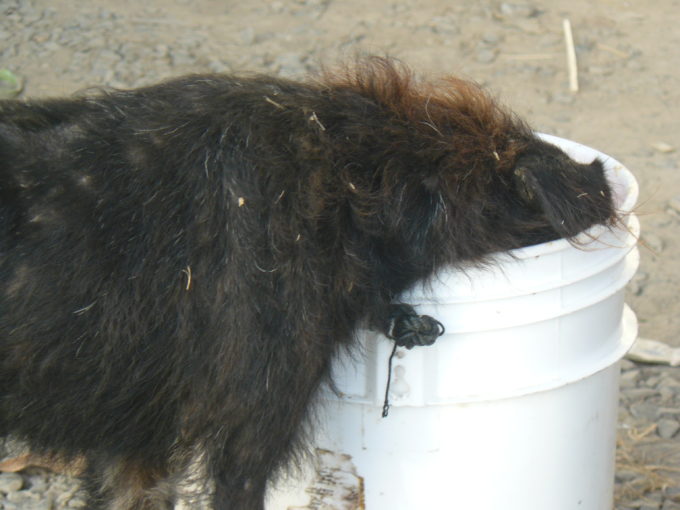
City dogs
The subject of Panama’s city dogs is inseparably linked to the country’s transformation over the last half of the 20th century from a mostly rural society to a mostly urban one. The process is continuing, not only with the population growth of the Panama City metro area that’s now home to most of the nation’s population but also with the more recent urbanization of what were sleepy little provincial towns and with the growth of bedroom communities mostly to the west of the capital and the canal, a short drive to and from the city center.
Panama City, founded as such by Pedrarias the Cruel on August 15, 1519, is said to be the first European city on the Pacific Ocean. It was laid out in neat blocks according to orders sent by the Spanish crown. Really, the city is a lot older than that. Just how much older, archaeologists are still finding out, but it’s at least 1,000 years old. When Pedrarias’s advance men got there they found an indigenous settlement whose inhabitants lived mainly by fishing but one of whose industries was goldsmithing. The city the Spanish conquistadores founded on that site was destroyed in 1671 when it was attacked by the extreme Protestant bigot and Welsh privateer Sir Henry Morgan — later Lord Lieutenant Governor of Jamaica. It was one of the last battles of the Wars of the Reformation but the fighting for the city lasted only a few hours. Historians argue about who set the fire that destroyed a city that at the time was still rebuilding from an earthquake a few years before. Most likely it was the Spaniards conducting the scorched earth strategy that they had followed starting when news came of Morgan’s seizure of Fort San Lorenzo on the Atlantic Side 10 days earlier. Most city residents fled before Morgan and his men got there, taking most of their portable valuables with them.
(Imagine if you were Jewish in that time and place, something that was then illegal in the Spanish Empire. It could get you haled before the court of the Holy Inquisition in Cartagena, which, however, saved most of its efforts and ferocity for the suppression of African religions among the slaves. There certainly were Crypto-Jews — those who outwardly professed to be Catholics but secretly maintained their Jewish religion and heritage — in Panama. However, because Judaism was a crime written records and reliable histories were not kept. The legend is that the Jews of Panama La Vieja had no intention of coming into harm’s way in the course of what in addition to an act of plunder by pirates acting under British royal charter was a holy war between Protestants and Catholics. Thus, it is said, they fled largely by sea, and largely to Las Tablas. The name means “the boards” in Spanish, from the wood scavenged for building materials from the ships by which people fled the doomed Panama City to a new home on the Azuero Peninsula. Legend has it that the seat of Chiriqui Province at the western end of the country, David, was also founded by Crypto-Jews.)
In any case, the “original” Panama City, built largely by black slaves according to plans drawn largely by Italian architects, was abandoned in favor of a more easily defended peninsula several miles to the west. The second center of Panama City is now known as the Casco Viejo, in the capital’s corregimiento of San Felipe. The area has been the seat of church and state ever since. The role has changed over time, from when Panama was a province of the Spanish Viceroyalty of New Granada, then when it became a department of an independent and chaotically centrifugal Colombia, and all through its more than a century as an independent republic. Nowadays the Supreme Court and National Assembly meet elsewhere in the capital and the Catholic archdiocese has also moved its offices, but the presidential palace, many government offices and several important Catholic churches are still in the Casco Viejo.
Panama La Vieja? It’s now a national monument and park, but before it became that people gradually moved back in and in some cases made their houses out of bricks and stones from the old ruins. Eventually the urban sprawl reached from the second city center some 10 miles down the coast to the original Spanish city, then farther east and then inland to the northeast. The removal of residents from the monument area was the occasion for payoffs and coercion but the rest of the neighborhood, Panama Viejo, lives on as a low-rise working class district these days. When people have their little yards fenced, it’s actually one of the better places in the capital to be a dog.
The Casco Viejo? In its early years it was a white enclave behind a tall wall and a moat. (The moat is gone, but a small part of the old wall still exists near the neighborhood’s Parque Herrera.) At night after the drawbridge went up the only black people welcome were domestic servants. The area was ravaged by a series of 18th century fires, while beyond the walls in Santa Ana and La Cienaga the city slowly began to grow outward again after its refoundation. Much of the post-fire reconstruction of the Casco Viejo — some of which has been left in ruins to this day — was done with ironwork and architecture akin to and in some cases imported from the French Quarter of New Orleans. Buses are prohibited and the narrow brick streets are not amenable to speeding cars, and meanwhile there has been much gentrification in the 21st century Casco Viejo. All in all, it’s an upscale and pleasant place to be a dog, except that homeless dogs are not tolerated in the neighborhood to the extent that the many feral cats are.
Panama City as a whole? Take it as just within the limits of the municipality proper or as a larger metro area — however you want to define it. In any case the urban area encompasses a varied expanse of industrial areas — predominantly transportation or commercial in a country that manufactures relatively little — mixed in with residential and business districts. The former Canal Zone areas were planned, but otherwise Panama City has historically had little zoning. There are also farms and jungle areas within the capital district and in the metro area beyond. It creates many different ecological and social niches for dogs to occupy.
Go into upscale Panama City neighborhoods like Paitilla early in the morning and you will get a certain glimpse of the class divisions there. You will see maids walking their employers’ dogs, most of these smaller dogs, many of these purebred or allegedly so. The bigger dogs don’t tend to do so well in apartments, even the relatively more spacious ones of Paitilla. There is also a subculture among wealthier Panamanians to whom animals are status symbols — whether showy dogs or a horses — rather than symbiont members of the household or friends who demand and deserve a certain amount of personal care. Rich Panamanians include a notorious pool of suckers for unscrupulous dog breeders selling expensive puppies with falsified pedigree papers or undisclosed genetic defects.
Go out to San Miguelito, which started out as a shantytown at the intersection of the Trans-Isthmian Highway and the road to Tocumen Airport back in the 1950s and is now a city of more than 300,000 inhabitants, and you will see dogs in a different set of social relationships. In that predominantly working class area you will see far more dogs running at large than in Paitilla, some of these pathetic abandoned ones, skinny from worms and afflicted with mange or other skin maladies, some of them with collars and homes to come back to — if they manage to avoid the cars and other urban hazards. In San Miguelito many of the individual one or two-story homes will have little fenced yards patrolled by dogs, or dogs that spend part or all of their time tied or chained up outside. Miniature and pure breed dogs are less common in San Miguelito than in the capital’s upscale condos.
Panama’s capital is large if one considers that it is the governmental center of a country whose national population has only recently surpassed four million. Its formal city limits encompass more than 262 square miles of land. These days the shallowest of travel writers who come in for a few days to report for the corporate mainstream newspapers like to emphasize the skyscrapers of the city center, or perhaps the old architecture and noteworthy bars and restaurants of the Casco Viejo where in addition to the presidential palace, most famous churches, the ornate National Theater and the plaza where independence was proclaimed in 1903 are located. The more serious travel writers who spend some time getting to know Panama and its history will tell you a bit more about the city and its history. The more attuned eco-tourism writers may take you to the city’s forested parks, especially Ancon Hill during the annual Panama Audubon Society Christmas bird count that monitors the busiest of the world’s migratory flyways. But most of the capital isn’t particularly a tourist attraction.
The city is still growing, most noticeably in the reports of the international media upward in in the form of skyscrapers. However, if you are a politician who wants to be elected mayor (alcalde) of the capital or for that matter president of the republic, these days you need to pay more attention to its sprawl toward the east and northeast. That’s the direction in which the city’s demographic center is shifting and thus an increasingly important source of votes.
A series of political facts during Panama’s relatively brief history as an independent republic have shaped the direction of that growth.
The creation of the Canal Zone by the dubious Hay – Bunau-Varilla Treaty a few days after independence from Colombia created not only political facts but a crucial physical one. The construction of the Panama Canal within the generally 10-mile-wide strip that was the US-run Canal Zone placed a legal barrier, and with the canal’s completion a water barrier, that restricted the capital city’s growth to the west. The Zone’s political boundaries meant that the city center as it was at the time could not really expand toward either the west or very far due north. It had to go east along the coast and later northeast in the direction of the town of Chepo, with the Bayano region and the Darien beyond that.
In 1925 there was a great rent strike in Panama City, where the minor rentiers of a Creole aristocracy — men with illustrious and largely made-up family histories on the isthmus — had made a lot of money off of the boom in demand for housing during the canal construction era. But that time drew to a close as the canal was finished in 1914. The landlords were not content to live with the ebbs and flows of supply and demand. The tenants — many of the most militant of them foreigners — couldn’t afford to pay the high rents in a contracted post-construction economy. The struggle became quite acute and was at an impasse until the Liberal President Rodolfo Chiari asked for and received US military intervention. The strike was crushed and a lot of foreigners, particular West Indian militants — some influenced by the ideas that Marcus Garvey had developed while working as a journalist in Colon — were deported. Many Spaniards and Italians who held anarchist opinions were also expelled from the isthmus. Not everyone who was involved in the strike was kicked out. Today’s Panamanian left traces some of its most important roots to that struggle, even though for various reasons it has seen fit to forget that history. Panama’s landlords and real estate speculators won a free hand that pretty much extended unchecked until some reforms during the 1968-1989 military dictatorship imposed a few limits.
In the meantime, what were people who couldn’t pay the high rents demanded in the central city to do? The policy under successive governments was to allow, even encourage, people to occupy an unclaimed vacant lot at the city’s outskirts, put up a shanties and start to build more substantial houses to the extent that they could afford them. For roads, schools, storm drains, sewers, parks, police and fire protection and utility services it’s a horrid public policy but it became a national habit. As unclaimed land became a bit more scarce the phenomenon of mass land invasions arose, often with some local politician and even more often with someone selling building materials as the instigator.
Under military rule legislation was passed to prohibit landlords from collecting rent on condemned buildings, but also prohibiting the tenants from getting any squatters’ rights from living in such tenements. Ultimately that housing law was a boon to the arsonists that descendents of or purchasers from the shut-out landlords hired. Burn the place down and the title holder gets the lot back to sell or develop. In the meantime much of the capital’s city center was hollowed out with abandoned buildings or vacant lots while the district grew on its outskirts. Across the isthmus the square mile of the original Colon city has been similarly depopulated, with the displaced largely being moved out to housing projects along the road toward San Miguelito and Panama City.
Two US-inspired highway projects contributed mightily to the shaping of the metro area’s growth. During World War II, at first exclusively for US military use, the Trans-Isthmian Highway (Transístmica in local parlance) was built to connect Colon and Panama City. It gradually became an urban growth corridor for Panama, although the existence of the Canal Zone delayed this process in many areas along the way for several decades.
Then at US urging and in part under the auspices of the Organization of American States the Pan-American Highway was built, with the aim of a road that unites all of the Americas. from Alaska to Tierra del Fuego. Part of the job was in the former Canal Zone, the early 60s construction of the Bridge of the Americas across the Panama Canal. The last piece of this international public works project has never been completed — sensitive ecological areas, the desire of local indigenous groups to be protected from outsiders colonizing their lands and the natural jungle barrier between Panamanian cattle which don’t have hoof and mouth disease and South American cattle which do have prevented the final piercing of The Darien Gap on the Panamanian and Colombian border. But the part that has been finished stretches east beyond Panama La Vieja and Panama City’s Tocumen Airport.
In 1979, pursuant to the Torrijos-Carter Treaties, the Canal Zone as a formal governmental entity — or US colony if you will — ended its existence. The American military bases lingered on for another 20 years and the canal jobs and properties of the former Canal Zone only gradually passed into Panamanian hands. The usual Panamanian term for the process is reversion (reversión), a word that many of the American civilians who had made the Canal Zone their home — the Zonians — have found annoying because as they see it the assets that passed into Panamanian hands by and large were built under US auspices, the land itself was part of Colombia until the US-assisted coup that separated Panama as an independent country in November of 1903 and thus none of that “reverted” to anyone who had ever possessed it. The old Canal Zone was incorporated into the Republic of Panama, mostly to the municipal districts Panama (the capital city), Arraijan (the Pacific Side west of the canal) and Colon on the Atlantic Side.
The municipality of Panama is a strictly defined legal entity with set limits that expand with annexations and landfills. Then there is the metro area — but what IS the metro area?
Decades ago Panama City and San Miguelito expanded and ran into one another, so that although they are two distinct legal entities, the two municipalities appear to be one. From the air, the haphazard layout of the “original” San Miguelito, which has few entrances for the driver, would serve as a clue that it was a squatter development. But parts of Panama City have that origin as well. That side of the former Canal Zone south of the Chagres River and east of the canal has been divided between the two cities, what was the segregated West Indian neighborhood of Paraiso going to San Miguelito and most of the rest going to Panama City. Some of the former US military bases didn’t come under effective municipal jurisdiction until 1999. The Canal Zone, both civilian and military areas, was less densely populated and was more thoughtfully planned, and while some of those urban plans have been overtaken by subsequent developments those areas formerly colonized by the United States still have a markedly different character. Having bumped into Panama City when spreading south and east, San Miguelito has spread and continues to spread to the north, while Panama City continues to spread to the east and northeast.
One of the consequences of urban sprawl coupled with a promiscuous strain of Panamanian culture that persists in the nominally Catholic-majority country is immortalized in a 1960s calypso tune. There are certain businesses for which local politicians get hassled if there are any neighbors close enough to feel affected, and these tend to be set up beyond city limits to avoid that. Smelly establishments like slaughterhouses and loud ones like sawmills are in that category. So are the pushbuttons, walled motels elaborately designed to protect the privacy of trysting couples, sometimes youngsters who live in crowded family situations, often married people carrying on extramarital affairs. At one point a neighborhood along the Transistmica, Veranillo, lay south of San Miguelito’s residential neighborhoods and north of Panama City’s, and because of this location it was a logical place to put a noisy truck depot or a pushbutton. A number of pushbuttons were established in Veranillo and some of them still thrive, despite the neighborhood having long since been overtaken by the sprawls of both municipal districts. Thus the Panamanian English (of the West Indian flavor) song and dance craze, “Veranillo Push Push.” You can find it on YouTube.
The way that Panama City and San Miguelito have grown, they are clearly one continuous metro area. Some pollsters have historically defined the “metro area” as the combined provinces of Colon and Panama — but since that concept was adopted Panama province west of the canal has been made the separate province of Panama Oeste. Meanwhile some indigenous areas in the eastern part of Panama province have been made into the comarcas (somewhat autonomous commonwealths for Panama’s first nations, in some ways comparable to the US Indian reservations) of Madungandi and Wargandi. It might make sense to include the Panama Oeste municipalities of Arraijan — an abbreviated hispanicization of the direction “on the right-hand side” — and La Chorrera in the Panama City metro area, as these places largely serve that bedroom community function. Following the main highways or the canal from Panama City into the traditional Colon city center on the Caribbean Sea, it also makes a certain amount of sense to call that another part of the metro area. It makes less sense to use the term for those parts of Colon province that stretch along the sea in either direction from the city that was founded under the name of Aspinwall as the Panama Railroad terminus in the middle of the 19th century. We can argue about who qualifies and where the lines and distinctions of social geography ought to be drawn, but in the built-up parts of most of these areas the dogs will be fairly considered city dogs.
There are more yet if you consider dogs in the urbanizing — or suburbanizing — areas of the country’s Interior to be “city dogs.” The beach communities of Panama Oeste and Cocle provinces, along with the nearby mountain resort area of El Valle, have undergone tremendous growth spurts. Coronado in particular has mushroomed from a beach and golf course community that played to rich Panamanian retirees and Canadian expats into the commercial center for a wider area. Provincial seats that were once combinations of minor administrative centers and shopping districts for farming regions — Penonome, Las Tablas, Santiago and David — and the provincial seat of Herrera province, Chitre, which is a ceramics manufacturing center as well as the administrative center for a place that grows a lot of sugar cane and distills a lot of that product into liquor, have all grown into cities in their own rights as much of the population has moved out of farming and fishing into other economic pursuits. There are dogs in all of these places and the increased population densities and changed human economies have transformed canine lives as well. In the urbanizing and suburbanizing areas of the Interior, however, a city dog’s life is in somewhat closer to a country’s dog’s and by many measures is less extreme than life in the noisy, congested and disorderly metro area.
In Panama chaos marks the usual interfaces between machines and living things, including dogs. Unfortunately a lot of people have brought inappropriate country habits into the cities and one of these is letting their dogs run at large. The carnage on the roads is perhaps the most visible sign. Dogs are at risk running on city streets anywhere but the many aggressive Panamanian drivers are something else. Many of the drivers seem to show little regard for human lives — their own or anyone else’s — let alone for the lives of animals.
For people or anything else, safe road design is an underdeveloped set of arts and sciences in Panama. Most Panamanians ride the bus, walk, take taxis or more recently in parts of the metro area, ride the Metro trains. On the other hand, just as in the old days when riding a horse lent a certain social status — the rough equivalent of “gentleman” in Spanish is “caballero,” literally horseman — those who own cars often consider that this gives them a superior social status and property rights not only over their vehicles but over public spaces.
This writer once had the experience of appearing before a corregidora (roughly a justice of the peace, in this usage of the female persuasion) over an argument with some neighbors. These pestilential young xenophobes, beyond playing an anti-gringo card that the corregidora failed to slap down as her counterparts in most of the rest of the world would have done, actually asserted that it was their right to play with their car alarm by remotely setting it off under said author’s bedroom window at four in the morning because the car and its Viper alarm were their private property.
In a move to boost their popularity with a certain segment of the population, the nation’s discredited and disliked legislators once approved a law declaring that drivers have a right to a free parking space. The immediate context was developers of one part of the former Paitilla Airport failing to provide enough parking for the people who do business at their premises, and the developers of a shopping mall across the street deciding to charge for parking on their lots by visitors to the neighbors’ buildings. In the end the executive and judicial branches of government didn’t go along with that sweeping declaration and policy, but limits were imposed on what parking fees could be charged.
To walk down a Panama City sidewalk and have some driver come up behind, leaning on his — invariably his rather than her — horn in a demand to get off of the sidewalk so that he can drive on it is part of the urban experience in the capital. More frequently it’s a matter of having to walk on the edge of the street, braving the possibilities of maniacal drivers, because somebody has decided that it’s his or her right to park on the sidewalk.
Bottom line? Most of the nation’s traffic fatalities are pedestrians, and the dogs who are killed greatly outnumber the human victims but are nowhere officially counted.
Then there is the noise, annoying to people, worse than that for animals.
Is “urban” music a category of city noise? It can be and the genre that most often gets tagged as such is in the hip hop vein, translated into Panamanian (and Puerto Rican, “Nuyorican” and so on) as regueton. One might perhaps describe it as a Spanish-language cousin of Jamaican dance hall music, or less charitably call it hispanicized gangsta rap. It has in a few years evolved from angry and vulgar shouting over an electronic drum beat to an important national art form, with some very good artists who are anything but gangsters. Go out to such rural settings as the indigenous commonwealth of Guna Yala, and you find hip hop, sometimes in the indigenous language. You can also get blasted out by more traditionally recognized folksy music like cumbia or tamborito for that matter, or rock and roll or salsa or the very popular on the isthmus bachata, which has Dominican roots. But whatever the genre, in the city or elsewhere, such few noise laws as Panama has are seldom enforced, the concept of appropriate technology — like proper use of a volume dial — is little known, and unlike in a village where everyone knows everyone and it violates customs, manners and common sense to overly annoy those upon whom one may need to depend by blasting them out with loud music, as the population gets denser in any given part of Panama so do many people about the concept of noise. Dogs hear better than we do and if hip hop at top volume annoys some of them almost as much as a thunderstorm, setting off firecrackers, bottle rockets or other fuegos artificiales physically hurts their ears. The phenomenon of angry city neighbors bugging their corregidores, representantes and alcaldes about loud music at all hours of the day and night is a relatively new and growing phenomenon in Panama, and agitation by dog lovers to curb the fireworks for dogs’ sake lags well behind that.
It’s a different cultural mix, much more international in Panama City’s upscale neighborhoods and resort communities. Panama has ethnic communities to which a dog is an honored member of the family, others to which it might be the current incarnation of a deceased relative, and yet others to which dog meat is a delicacy to put on the dinner table. The combination of a mostly Catholic population and a pope who takes his name from the patron saint of dogs must surely be a break for a lot of Panamanian dogs. Those kindly folks who feed and give care vary widely in the resources and knowledge to go about these tasks. The place has its particularities but with respect to the treatment of dogs it’s like many others.
The extra special horror of being a homeless dog in Panama is known by concerned civic groups, which via publicity, example, the social and mass communications media and the schools are trying to counter it. The message is that real men are kind to animals, its corollary that boys who throw rocks at homeless dogs are wimps.
As with people, many individuals are kind to the homeless, most walk on by and then there are the bullies who go out of their way to be cruel. So it is with public officials as well as ordinary citizens. Compare Panama with the United States and law enforcement people can be quite rough, sometimes unreasonably so, but the Americans win hands down at extremism in that department. Get busted by the dog catcher in the USA and it’s generally a death sentence. The old “humane society” catch and “put to sleep” if not quickly adopted operation is now questioned in the USA and is a concept that horrifies most Panamanians. While over the years Panama’s police have been known to move into areas with large populations of stray dogs on missions to round up and kill those without people to take them in, recently they have worked with spay groups to neuter the homeless dogs and to try to find homes for them.
To be a street dog in urban Panama usually doesn’t mean immediate starvation. There will be a garbage bag or some discarded chicken bones to be scavenged, and somebody is likely to take pity and donate a morsel of food. But Panama is tropical and just like with people, it has an extra-large menu of maladies under the heading of pestilence. The homeless dog in Panama will have guts full of worms and other parasites and skin infested with ticks, fleas and mites, all of which are likely to have a bountiful array of pernicious microbes to pass on. Homeless dogs don’t take care of themselves as well as feral cats do. They need more care than their feline neighbors on the streets, and a bone or the remains of lunch is hardly enough.
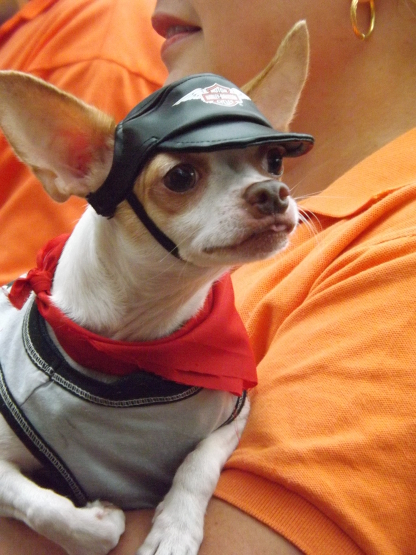
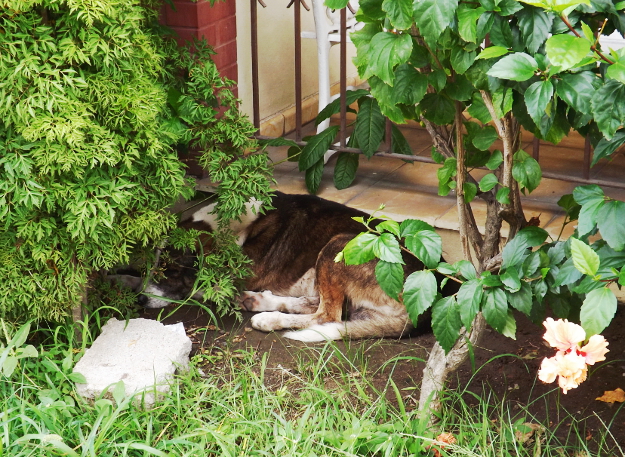
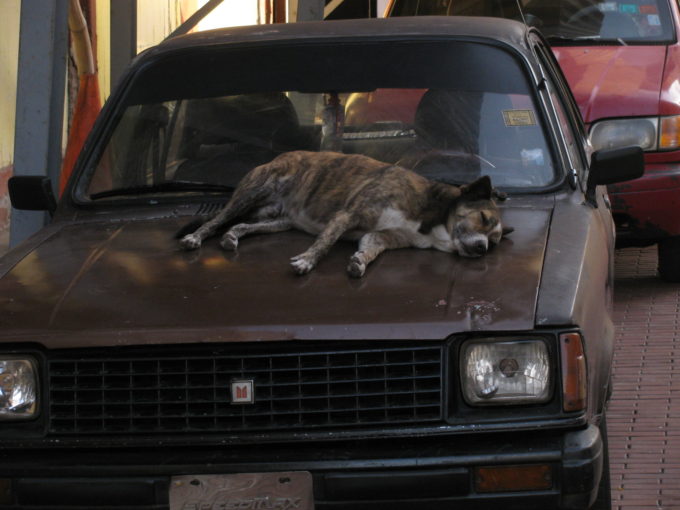
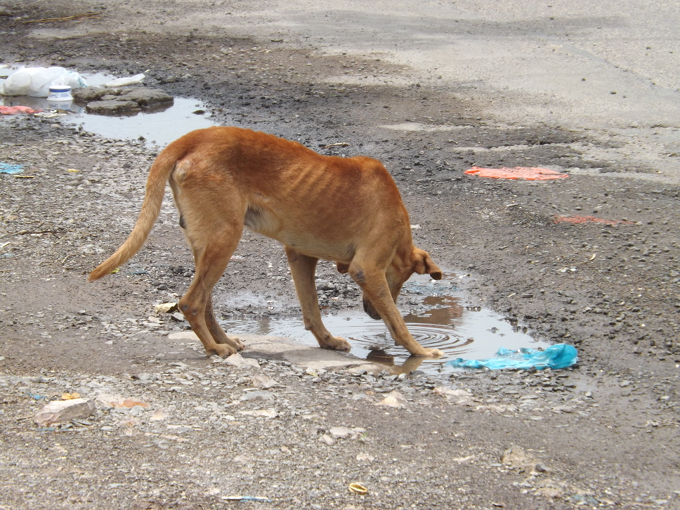
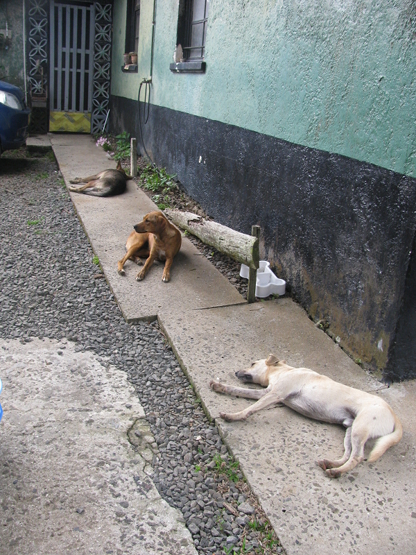
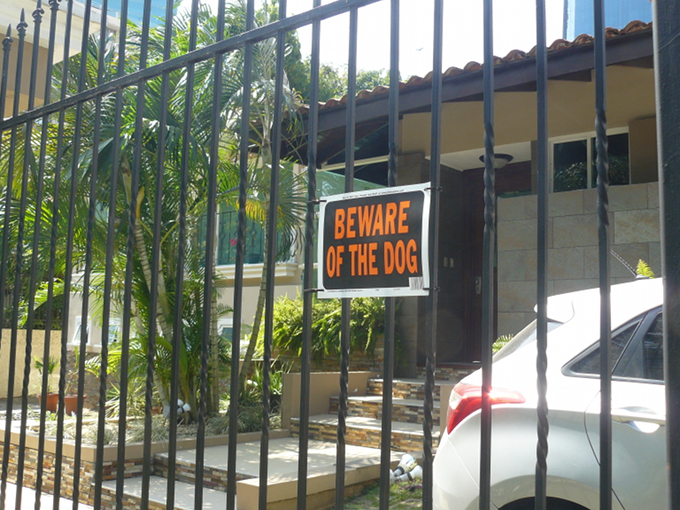
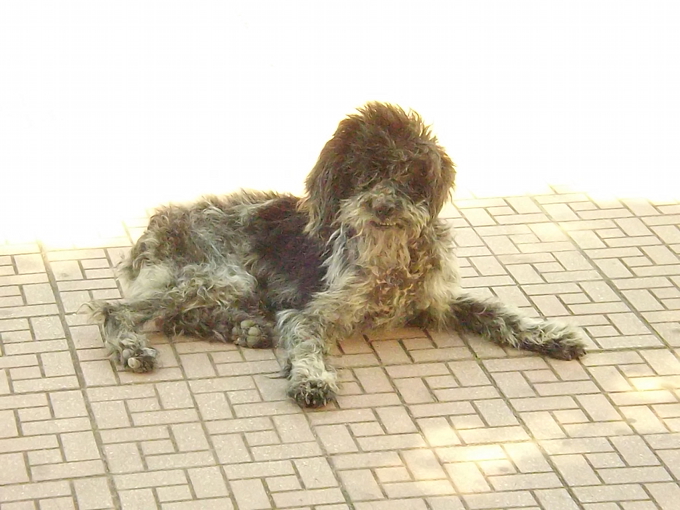
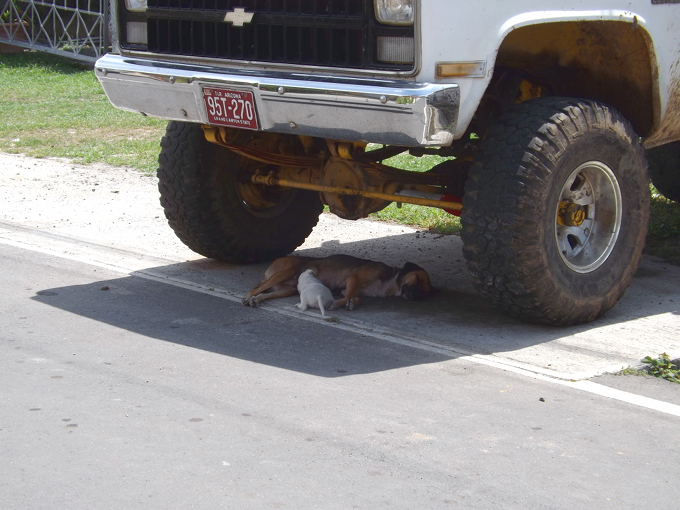
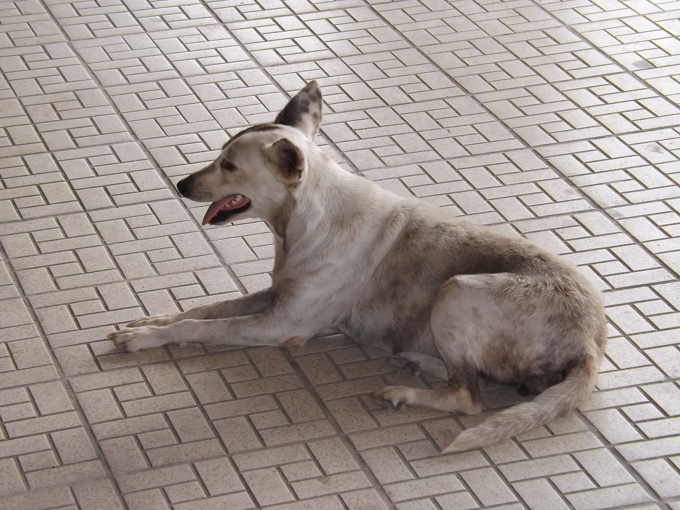
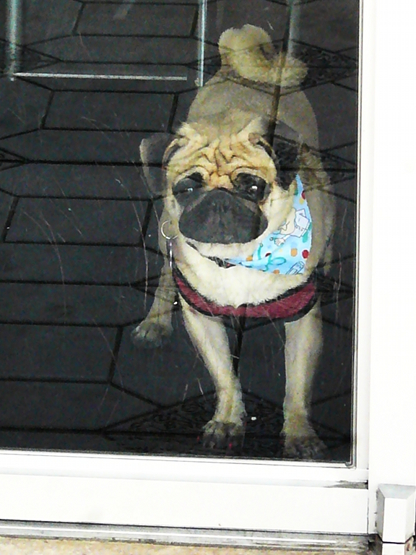
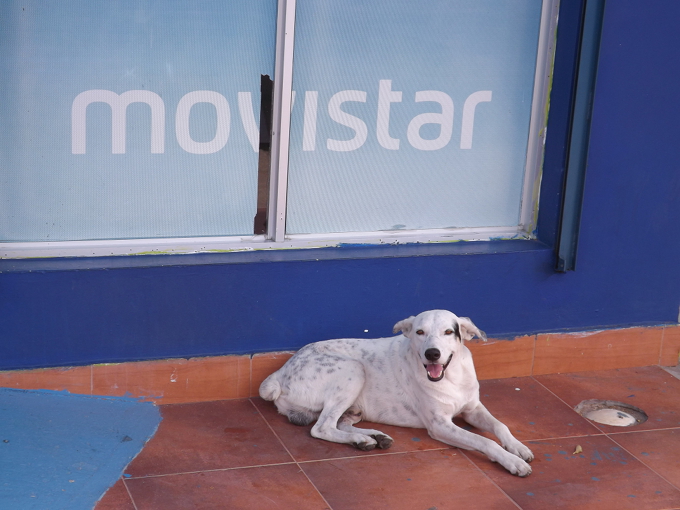
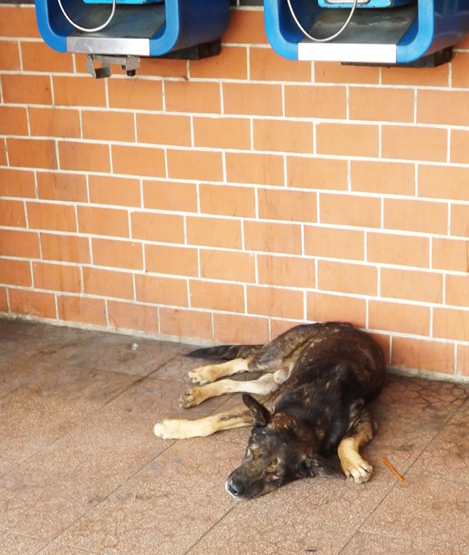
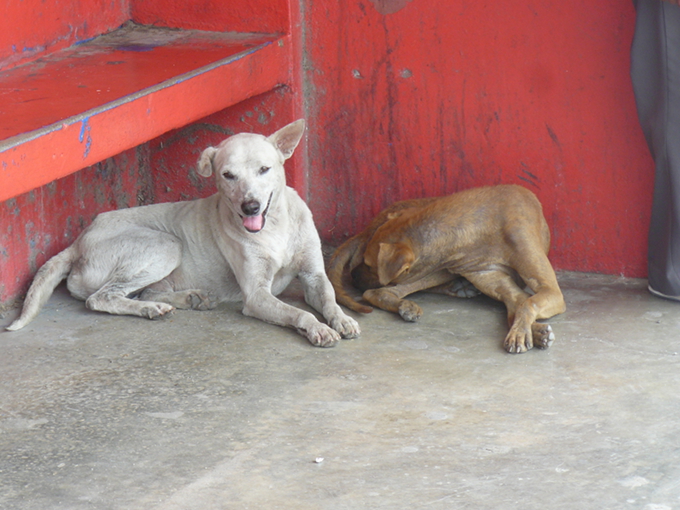
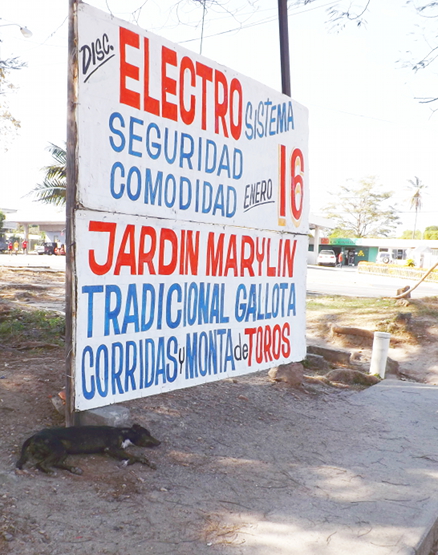
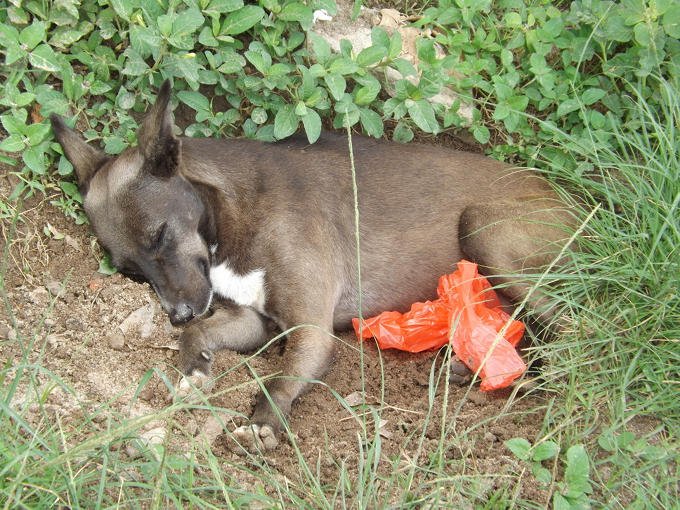
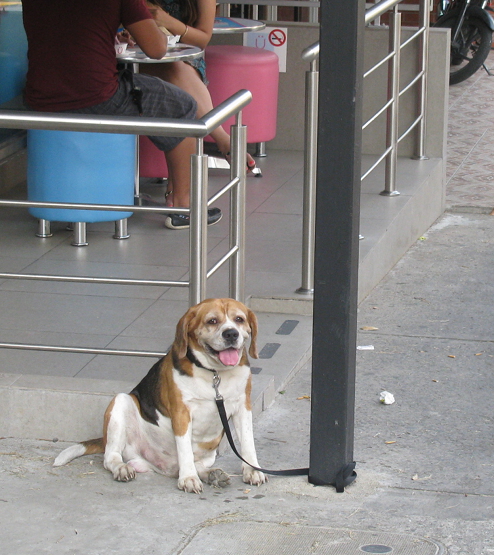
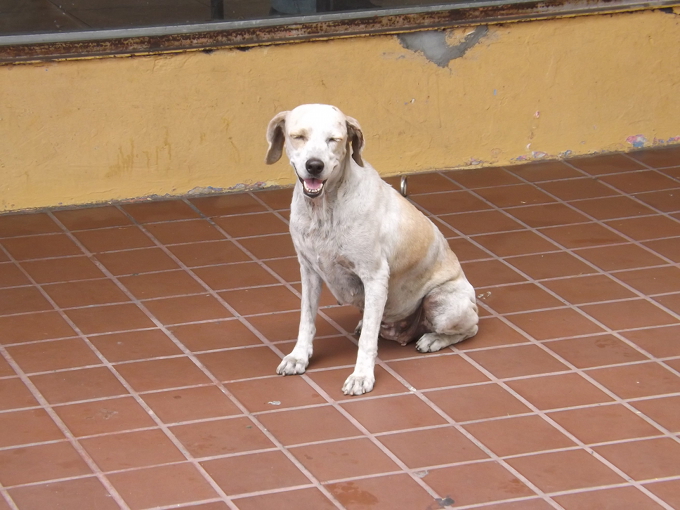
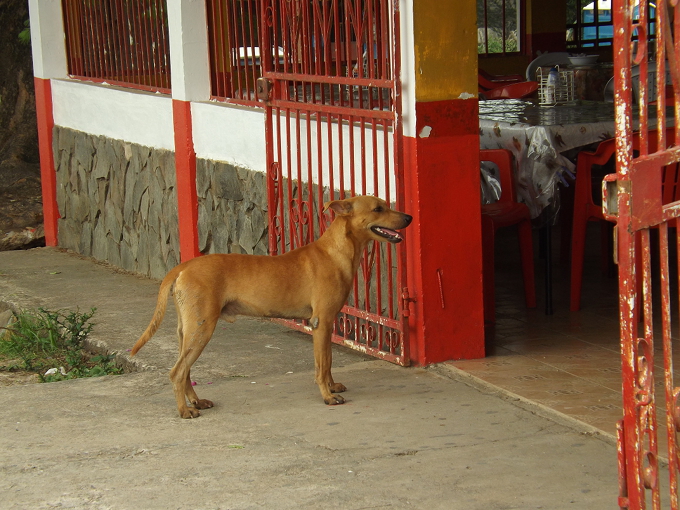
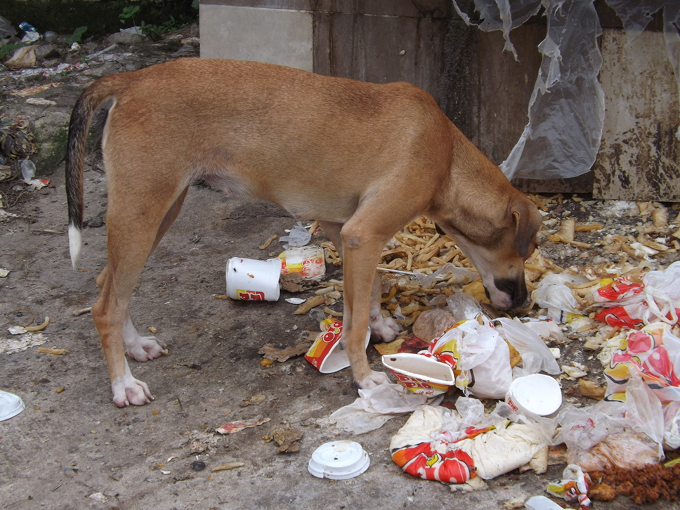
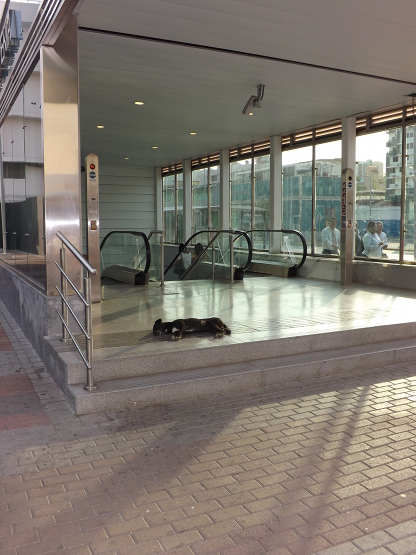
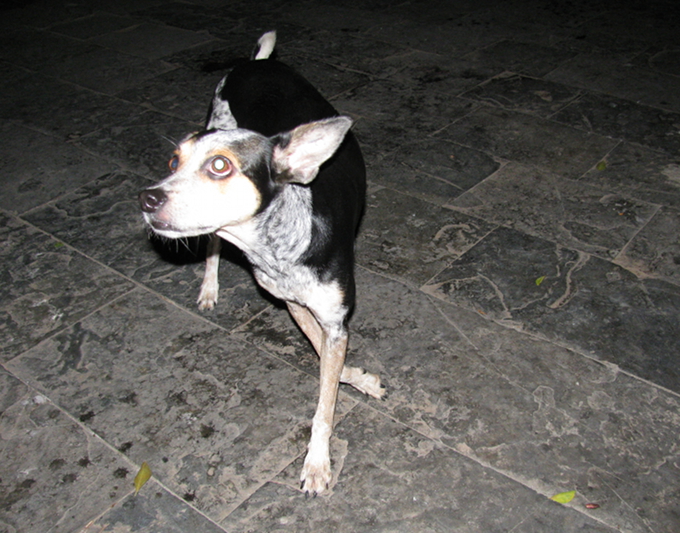
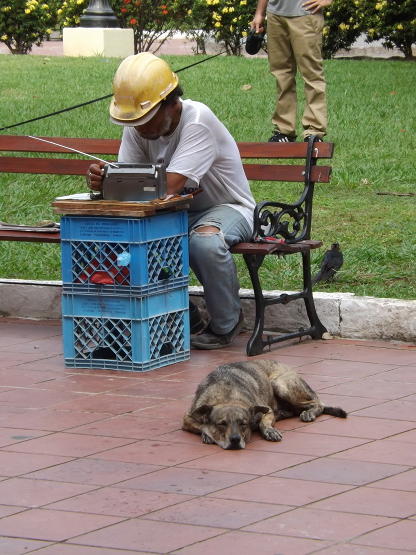
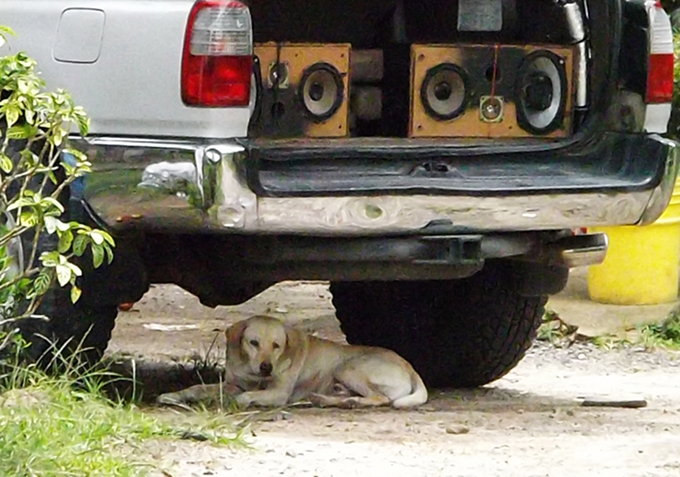
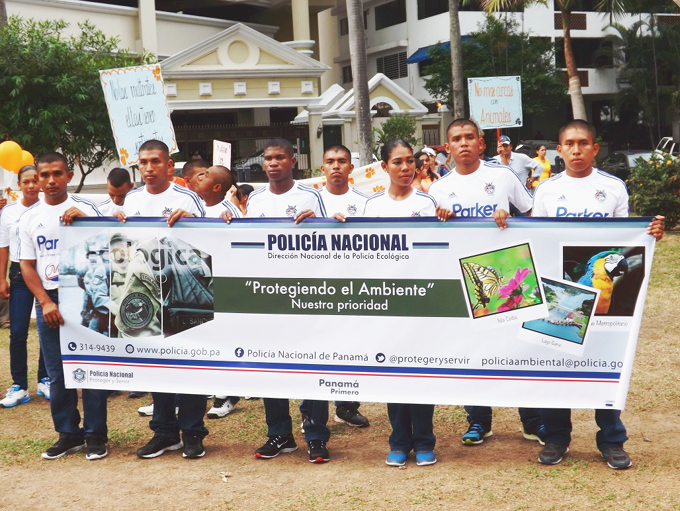
~ ~ ~
These announcements are interactive. Click on them for more information.









